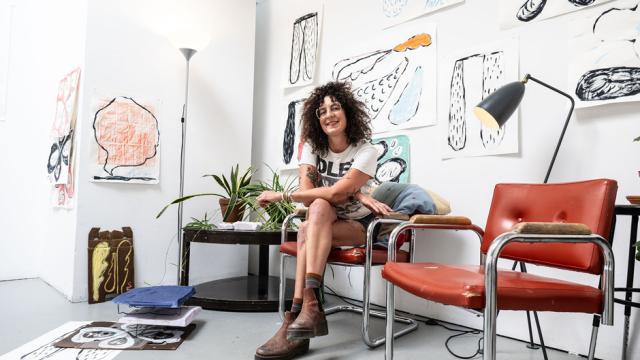Information sur le programme
Aperçu du programme
Cette résidence en arts visuels de trois semaines met l’accent sur le grattage des peaux, la fabrication d’outils en os et le travail du parflèche. Les artistes en arts visuels travaillant le cuir et le parflèche approfondiront leurs connaissances sur les façons de gratter une peau et de se servir du parflèche, encadrés par des enseignants, des aînés et des gardiens du savoir. On invite chaque participant à interagir avec ses pairs, avec les enseignants, et avec les membres de la communauté tout en profitant de périodes de travail autonome en studio dans le pavillon appelé Glyde Hall. Les participants œuvreront au sein de la communauté et auront accès à des séances de mentorat individuel. Participants et enseignants auront l’occasion de présenter leur travail en cours dans le cadre d’ateliers portes ouvertes.
Que propose le programme?
Les participants renforceront leur maîtrise artistique et technique en acquérant des compétences en grattage de peau, en fabrication d’outils en os et en utilisation du parflèche. Ce programme favorisera la création de liens entre les participants tout en permettant à ceux-ci de profiter de périodes de travail autonome en studio. Les candidats choisis participeront aussi, au sein de la communauté, à des séances de récit d’histoires et d’échange de connaissances sur le tannage de peaux.
À qui le programme s’adresse-t-il?
Les artistes autochtones œuvrant en arts visuels traditionnels ou contemporains s’intéressant au processus de tannage de peaux et au travail du parflèche sont invités à présenter une demande.
Itinéraire
Cette résidence de trois semaines propose un alliage équilibré de travail artistique autodirigé, de travail encadré par des mentors donnant des conseils sur le processus de création, et d’occasions pour les participants de mettre leur travail à l’épreuve puis de le présenter lors d’une activité publique (film ou lecture), si désiré. On encourage les participants à collaborer par la présentation de leur travail les uns devant les autres.
Première semaine
Les participants prennent part à une séance d’orientation sur le campus et sont accueillis par les enseignants, le personnel du Centre des arts de Banff et un aîné. Au cours de cette semaine, des enseignants donneront des présentations et il sera possible de s’inscrire à des séances de mentorat individuel avec eux.
Deuxième semaine
On commencera le matin par une réunion durant laquelle on souhaitera la bienvenue aux enseignants de passage et on les remerciera, et on vérifiera si les participants ont des besoins particuliers ou des questions. Au cours de cette semaine auront lieu des présentations par les participants et des séances de mentorat individuel.
Troisième semaine
La semaine commencera par une réunion durant laquelle on souhaitera la bienvenue aux nouveaux enseignants, on remerciera les enseignants invités, et on vérifiera si les participants ont des besoins particuliers ou des questions pour la semaine qui commence. Des enseignants donneront des séances de mentorat individuel. Ateliers portes ouvertes.
Corps enseignant
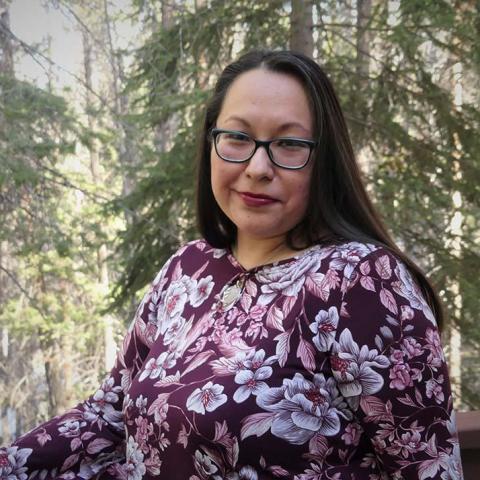
Janine Windolph
Janine Windolph (Atikamekw/Woodland Cree) is a Saskatchewan-based filmmaker, video editor, educator, fine-craft artist, and storyteller. She is the Director of Indigenous Arts at Banff Centre for Arts and Creativity. Prior, Janine was the Curator of Community Engagement at the MacKenzie Art Gallery in Regina, Saskatchewan. She has her Master of Fine Arts: Interdisciplinary in Indigenous Fine Art and Media Production.
Janine was a co-producer for RIIS Media Project Inc wherein she co-directed RIIS from Amnesia: Recovering the Lost Legacies (feature-length documentary) that features the history of the Regina Indian Industrial School (RIIS).
Janine’s filmography includes roles as producer, director, narrator, writer and/or editor. She directed Stories Are In Our Bones, Lifegivers: Honoring Our Elders and Children, The Land of Rock and Gold, Ayapiyâhk ôma niyanân “Only us, we are here at home,”
Janine is working with Buffalo Mountain Banff; a community group to Buffalo Mountain, and providing production support to the Buffalo Mountain Video Project that is part of her sons’ homeschooling.
Director of Indigenous Arts
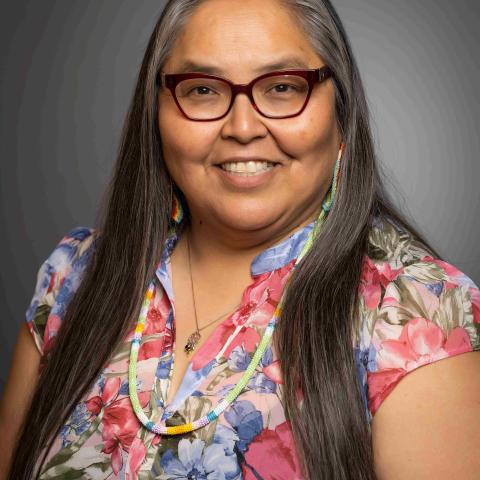
Joely BigEagle-Kequahtooway
Joely BigEagle-Kequahtooway
Joely BigEagle-Kequahtooway is an inter-disciplinary land-based buffalo artist. She is a fashion and textile designer, visual artist, beader, storyteller and co-founder of the Buffalo People Arts Institute. She is Nakota/Cree/Saulteaux from the White Bear First Nations - signatory to Treaty 4. She has degrees in Civil Engineering from the University of Calgary and Mathematics from the First Nations University of Canada. She is currently in the Master of Fine Arts program at the Institute of American Indian Art in Santa Fe, New Mexico. She loves to incorporate mathematics and geometry in her artwork and is inspired by the perfect symmetry in nature. Her mantra envelopes everything Tatanga (Buffalo) as it connects her to ancestral memories, the land and is the manifestational glue that keeps her world together.
Faculty
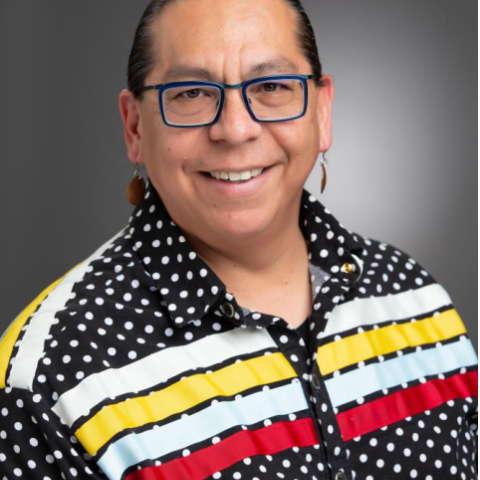
Lorne Kequahtooway
Originally from the Treay 4 area, Zagime Anishnabek, Lorne Kequahtooway is dedicated to sharing and preserving his culture with others in Saskatchewan. Lorne is co-founder of Buffalo Peoples Arts Institute where he currently teaches cultural awareness through storytelling and community engagement around an interactive buffalo hide-tanning experience.
Faculty
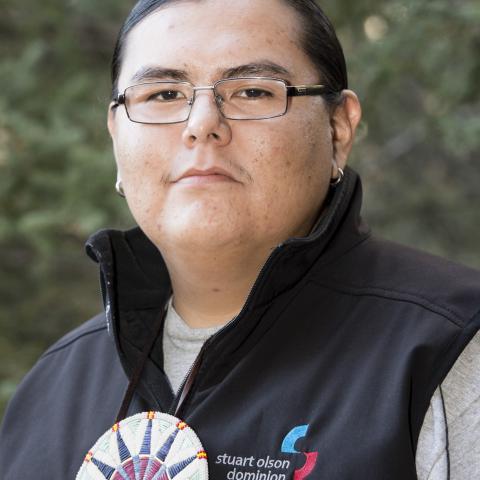
Daryl Kootenay
Daryl Kootenay is a young Indigenous leader, artist, entrepreneur, facilitator, educator, and mentor to many Indigenous and non-Indigenous youth in his community and surrounding communities of Stoney Nakoda Nation. Daryl is a father to 3 beautiful children Nakoda, Marazu, & Haske, and recently married to his now wife, Ariel.
Daryl is known for his international experience and work throughout Africa, Peru, Nicaragua, Mexico, England, France, Spain, Italy, America and Canada, and continues to work with young leaders across the globe on various projects relating to humanitarianism. His focus on Indigenous global issues sits along his work on local issues his community, and surrounding Indigenous and non-Indigenous nations and communities, are facing in the Southern Alberta region (also known as Treaty 7 Territory).
Daryl is a Stoney Nakoda Nation member through his mother’s heritage and is also from the Navajo Nation in New Mexico from his father’s heritage. Mr. Kootenay is a talented traditional artist and dancer, travelling across Turtle Island competing at many powwows and utilizing his regalia as teaching tools and methods.
Mr. Kootenay continues to utilize his traditional knowledge, art, dance and international experience to promote and educate people of all ages, with his experience in:
- Culture and identity
- Leadership development and wise practices
- Organizational leadership
- Project management
- Strategic planning
- Healthy relationships, partnerships and alliance-building
- Mental illness and overcoming stigma
- Individualism and volunteering
- Facilitating and public speaking
Daryl is the Co-executive Director of the Howl Experience, Owner of Bald Eagle Ltd., a Focal Point for the Global Indigenous Youth Caucus to the UN, Co-founder of the Nakoda Youth Council and a Co-convener of the Mni Ki Wakan Decade of Water Summit. Mr. Kootenay was recognized for his local, national and international work by the Governor General of Canada and was awarded Canada's Sovereign's Medal for Volunteers at the Rideau Hall, Ottawa.
Faculty
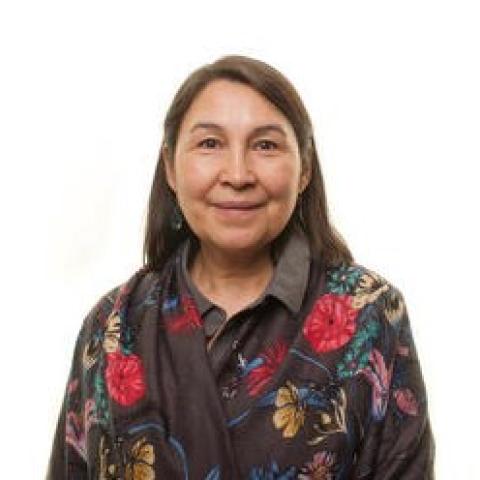
Lucy Yakeleya
Lucy Yakeleya was born and raised into the traditional ways in Fort Good Hope, Northwest Territories, as well as Colville Lake, NT. She spent several years in Residential School in Inuvik, NT. Lucy now lives and works in Yellowknife, NT. The distinct shapes, colours, patterns and small beads used in Lucy’s artwork reflect the influences she picked up from her family and from the Sahtu region. This is a family practice, as most of Lucy’s siblings are also involved in the arts in the Sahtu to this day. On her journey as an artist, Lucy sold her artwork to make extra income, which then gradually turned into a fulfilling hobby. While Lucy sells her art, she mainly loves to create pieces for herself and for her family. Through the years, Lucy has shared her skills with students in schools and has passed on the tradition of hide tanning at the Dene Nahjo camp. In 2019, Lucy shared her knowledge and skills as a faculty for Urban Moose Hide Tanning at Banff Centre for Arts and Creativity.
Faculty
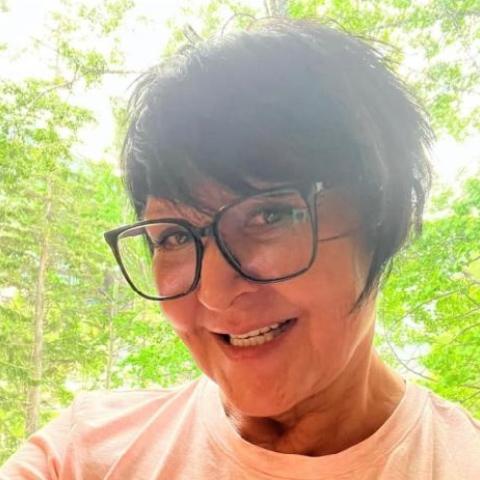
Suzan Marie
Suzan Marie is a Decesuline/Cree woman born and raised in the Northwest Territories. As a residential school survivor, Suzan has experienced firsthand the loss of culture and language that deeply impacted her life. In response, she is reclaiming her culture through being from a long line of traditional artisans. A traditional teacher keeping ancient Dene skills alive for over thirty years, Suzan co-authored two books, Whadoo tehmi / Long-ago people’s packsack Dene babiche bags: tradition and revival and Dene spruce root basketry / Dene ts’ukegáí tene rahesi: revival of a tradition, also referred to as the Dene suitcase and Dene pots and pans.
Suzan has taught across Canada and the US to all ages through what she calls reconciliation healing. She works with moose hair, porcupine quills, moose and caribou hooves, dentalium shell, angler, spruce-root, babiche bags, bone, beads, and embroidery using contemporary and traditional techniques. She sews earrings, caribou and moosehide mitts, and various styles of moccasins. In 2002, Suzan was the first recipient of the Queen Elizabeth II’s Golden Jubilee Medal for her commitment to keeping culture alive. A harvester of traditional materials and medicines, Suzan lives and breathes her culture. Suzan is also a mom and Setsune to her grandson Carver.
Faculty
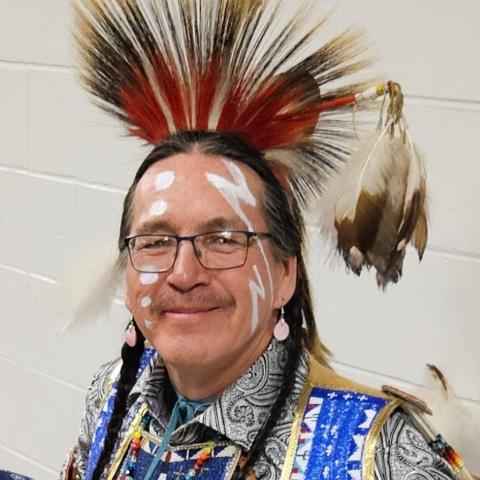
Gary Gott
Tansi. I am from the Treaty 4 lands of the Sapotaweyak Cree Nation. I was raised with the values of a family that fished, trapped and hunted from the land, and started learning hands-on from the age of 7 yrs. At the age of 19, in University I discovered traditional Indigenous spiritual ceremony and the world of powwow. I've been gifted to have been adopted and taught by families from various nations; Dakota, Lakota, Cheyenne, Plains Cree, etc. I've been beading for over 34 years to date, and have many examples scattered across North America. Recently I have concentrated on mastering the skills of Brain-tanning deer, elk, moose and buffalo hides. I also sing n dance powwow since 1989. I've seen an evolution as I've entered my mid 50s and continue to learn from all I meet.
Faculty Assistant
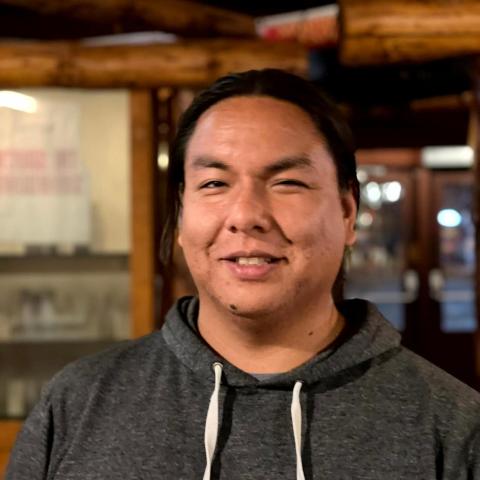
Wade BigEagle
Hello! My name is Wade BigEagle. I am from White Bear First Nations in Saskatchewan, Canada. I was raised by my mother Joely BigEagle, she took me to many places to experience my culture while growing up. I have been to many pow-wows and ceremonies that made me appreciate who I am and understand where my people come from. While my mother was learning the ways of the Buffalo, I only helped out a bit at first, I was too focused on my own journey. It was only until years later I had realized that her and my father Lorne Kequahtooway needed help with their Buffalo workshops. It has now been over two years since I have started helping, I have had many good experiences and lessons learned. I am very excited to continue this path and share my knowledge with my community and to those who want to learn. I am very proud doing what I do and extremely grateful for my mother, it is only the beginning of the new journey I am on.
Faculty Assistant
Ce qui est compris
Single or Shared Room
Lire la suite
Fermer
When applying, choose between staying in a single or a shared bedroom on the Banff Centre campus for the duration of your program.
Get connected with other artists on campus and focus on your projects in a creative environment while we take care of the day-to-day essentials.
Full Flex Meal Plan
Lire la suite
Fermer
Using a credit-based system to dine on campus, our flexible meal plans allow you to select meals according to your own needs during your stay. Banff Centre can accommodate most dietary requests.
The Full Flex meal plan is calculated at $70 credit per day, equivalent to breakfast, lunch and dinner at our Buffet service.
Showcase Your Work
Lire la suite
Fermer
This program offers opportunities to showcase your work-in-progress in one of our performance venues.
Gym Membership
Lire la suite
Fermer
Paul D. Fleck Library and Archives
Lire la suite
Fermer
The Paul D. Fleck Library and Archives - Current Services
The Library is delighted to support Banff Centre Participants, Artists, and Faculty with the following services:
- Open hours: 9:30 am to 1 pm, Mondays, Wednesdays, and Fridays.
- Access to collections, including program relevant books, scores, artists’ books, recordings, periodicals, and object library.
- Library accounts for borrowing materials.
- Digital Library, on campus and remote access.
- Library research assistance, by appointment.
- Archives research, by appointment only.
Please email library@banffcentre.ca or archives@banffcentre.ca for more information or assistance.
Box Office Discounts
Lire la suite
Fermer
Enjoy special artist rates for ticketed performances or complimentary access to events.
Participant Resources
Lire la suite
Fermer
Enrich your experience and get to know other artists on campus by taking advantage of the activities and support provided by our Participant Resources team.
Coûts et aide financière
You pay (fee after scholarship applied)
$0.00
Total fee (Tuition, Accommodation and Meal Plan)
$8 148.00
Scholarship amount applied*
$8 148.00
Droit de demande: 35 $
Les frais de dossier ne sont pas remboursables.
Les membres individuels du groupe doivent payer des frais d'inscription supplémentaires de 35 $ lors de l'acceptation.
*Une aide financière de 100% est disponible pour ce programme.
Si vous souhaitez être pris en compte, veuillez compléter la section Aide financière lors du téléchargement de vos documents justificatifs.
Le Centre des arts de Banff fournira des reçus officiels pour les frais de scolarité admissibles ainsi que pour l’aide financière et les bourses, comme l’exige la Loi de l’impôt sur le revenu. Vous recevrez un T2202 (Certificat pour frais de scolarité et d’inscription) pour les frais de scolarité admissibles payés, et un T4A (État du revenu de pension, de retraite, de rente ou d’autres sources) pour l’aide financière et les bourses applicables.
Contribuez à trouver le financement nécessaire pour votre expérience au Banff Centre! Consultez une liste de possibilités de financement d’ordre national et international ici.
Comment faire une demande
Short Biography
Please provide a biography of no more than 250 words. This may be used as a narrative for administrative and public use.
Personal Statement
In 250 words or less, provide a summary of what you want to accomplish while here, what focus you will bring to the residency, and how this experience will benefit you.
Experience level questionnaire
Please provide detail of any previous hide tanning experience, and your interest in the program
Sample of Work
Up to three samples of relevant images that relate to the program.
Processus de sélection
Les participants sont sélectionnés par les membres d’un jury impartial en fonction du mérite artistique, de l’effet potentiel du programme sur la démarche ou la carrière de l’artiste, de la faisabilité du projet et de la capacité du Banff Centre à aider à la réalisation de celui-ci. Le projet doit également cadrer avec les valeurs et les orientations stratégiques du Banff Centre telles que décrites dans son plan stratégique.
Les candidats seront informés de leur statut dès que la sélection sera terminée.
Admissibilité
Sont bienvenus tous les artistes de 18 ans et plus, quels que soient leurs origines, leur parcours, leur identité de genre ou l’expression de celle-ci.
Tous les programmes, le corps professoral, les dates, les frais et les offres d'aide financière sont sujets à changement. Les frais du programme sont assujettis aux taxes applicables. Les frais et acomptes non remboursables seront retenus en cas d'annulation. Tous les autres frais sont remboursés à la discrétion du Banff Centre. La date limite de candidature est 23h59. Heure normale des montagnes.
Clause de non-responsabilité
Tous les programmes, professeurs, dates, frais, et offres d’assistance financières sont sujet à changement. Les tarifs pour les programmes sont sujet aux taxes applicables. En cas d’annulation, les frais et acomptes non remboursables seront gardés; tous les autres frais seront remboursés à la discrétion du Banff Centre. L’heure limite pour postuler est 23h59, Heure Normale des Rocheuses.










